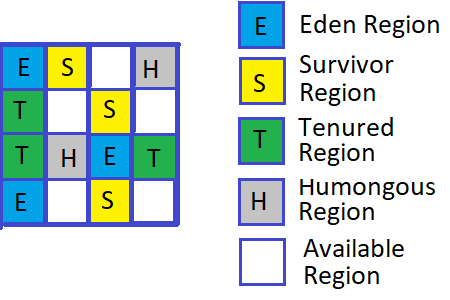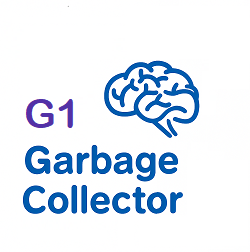The G1 Garbage Collector (G1GC) is one of the most advanced garbage collection algorithms in the Java Virtual Machine (JVM). It is also called Garbage-First Garbage Collector. It was designed to handle large heap sizes and to meet the needs of modern Java applications. Introduced in Java 7 as an experimental feature and made default in Java 9, G1GC aims to offer high throughput and low pause times.
For beginners, understanding G1GC might seem complex at first, but with a simple explanation, it becomes manageable. This article will help you understand what G1GC is, how it works, and when it should be used.
What is G1GC?
G1GC stands for Garbage-First Garbage Collector. It is a server-style garbage collector that is particularly suitable for applications with large heap memory. G1GC focuses on predictable pause times and efficient memory management.
Unlike other collectors that collect entire regions or generations of memory, G1GC divides the heap into several regions of equal size and collects them based on the priority of garbage. Hence, it is called “Garbage First,” as it focuses on collecting regions with the most garbage first.
How G1GC Works
To understand G1GC better, it helps to look at its core working principles:
- Heap Structure:
G1GC divides the Java heap into a large number of fixed-size regions. These regions are not grouped physically but are logically assigned to the Young, Old, or Humongous regions. - Young and Old Generations:
G1GC still maintains the Young and Old generation concept. However, instead of fixed boundaries, it dynamically assigns regions to these generations. - Region-Based Collection:
Each region can contain Eden, Survivor, or Old generation data. G1GC keeps track of how much garbage is in each region. During garbage collection, it first picks regions with the most garbage. - Concurrent and Parallel Phases:
G1GC performs many of its tasks concurrently with the application threads. It also uses multiple threads to speed up the collection process. - Pause Time Target:
One of the key features of G1GC is that you can set a pause time goal (for example, 200 milliseconds), and the collector tries to meet this goal during its collection cycles. - Humongous Objects:
Objects that are larger than 50% of a region are treated as humongous. G1GC allocates them in contiguous regions and manages them specially.
G1GC Collection Process
The collection process of G1GC is divided into several phases:
1. Young GC (Minor GC)
- Collects Eden and Survivor regions.
- Is typically fast and involves copying live data from Eden to Survivor or Old regions.
- Triggered frequently.
2. Mixed GC
- Collects Young regions and a portion of Old regions.
- Occurs after a Full GC or when certain thresholds are reached.
- It helps in gradually cleaning up the Old generation.
3. Full GC (Major GC)
- Rare in G1GC but occurs when memory pressure is high.
- Stops all application threads.
- More expensive than Young or Mixed GC.
4. Concurrent Marking Cycle
This phase identifies regions with the most garbage. It runs in the background and consists of several sub-phases:
- Initial Mark
- Root Region Scanning
- Concurrent Mark
- Remark
- Cleanup

G1GC Tuning Parameters
Here are some common JVM options used to tune G1GC:
-XX:+UseG1GC: Enables the G1GC collector.-XX:MaxGCPauseMillis=<n>: Sets the desired maximum pause time.-XX:InitiatingHeapOccupancyPercent=<n>: Defines when to start the concurrent marking cycle.-XX:G1HeapRegionSize=<n>: Sets the region size (usually between 1MB and 32MB).-Xmsand-Xmx: Set the initial and maximum heap size.
Advantages of G1GC
G1GC offers several benefits, especially for applications with large heaps and pause time sensitivity:
- Reduces long pause times by dividing the heap into smaller regions.
- Performs garbage collection concurrently with application threads.
- Prioritizes regions with the most garbage, improving efficiency.
- Allows pause time goals to be set.
- Handles large heaps (more than 4GB) better than other collectors.
Limitations of G1GC
While G1GC is powerful, it is not ideal for every scenario:
- Slightly more complex to tune than Serial or Parallel GC.
- May not meet strict pause time goals in all environments.
- Uses more CPU compared to simpler collectors.
When to Use G1GC
You should consider using G1GC in the following cases:
- Your application has a large heap (4GB or more).
- You want to reduce GC pause times.
- You need more predictable response times.
- You are running multi-threaded, server-side applications.
On the other hand, if your application has a small heap or runs on devices with limited resources, a simpler collector like Serial GC might be more appropriate.
GC Logs Example (G1GC)
Here is a sample of G1GC log output:
[GC pause (G1 Evacuation Pause) (young) 1234K->456K(2048K), 0.0034567 secs]
- G1 Evacuation Pause: Indicates a Young GC.
- 1234K->456K: Heap size before and after GC.
- 2048K: Total heap size.
- 0.0034567 secs: Time taken for the GC.
Conclusion
In summary, the G1GC garbage collector is a modern, region-based GC designed for applications with large heaps and the need for predictable performance. It balances throughput and pause times by using concurrent and parallel mechanisms. While it may require a bit more tuning, it provides significant advantages for applications where performance and responsiveness are critical.
As a beginner, it is essential to understand how G1GC works and how to configure it properly. Once you are familiar with its working and tuning, G1GC becomes a powerful tool in your Java performance toolkit.
If you are dealing with large applications or aiming to reduce long garbage collection pauses, then G1GC might be the best choice for you.
You may be interested:
